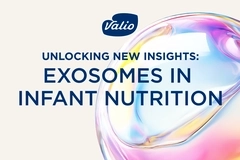Cow’s milk allergy guidelines linked with “unwarranted prescriptions” of specialized formula
09 Dec 2021 --- The overdiagnosis of Non-IgE-mediated cow’s milk allergy (CMA) in children may be leading to unnecessary prescriptions of specialized formula milks. This is according to a UK study, which found that the guidelines designed to help non-specialists such as parents diagnose CMA may be “inappropriate.”
Notably, common symptoms seen in children ranging from colic, regurgitation and eczema are normal in growing infants but are also symptoms used to diagnose cow milk allergy.
“If normal infant symptoms are over-interpreted and considered to be a cow’s milk allergy, this could lead to unwarranted prescriptions of specialized formula milks, with cost to families and healthcare systems,” Dr. Rosie Vincent, one of the researchers and clinical fellow, dermatology, Bristol Royal Infirmary, tells NutritionInsight.
The findings have flagged the importance of reviewing existing guidelines accordingly to minimize the chances of overdiagnosis. Current guidelines should be backed by more robust data, experts flag.
Current guidelines should be backed by more robust data, experts flag.
Misleading guidelines?
The study, published in Clinical & Experimental Allergy, notes that CMA has a prevalence of less than 1% in children. Researchers evaluated the guideline-defined milk allergy symptoms in 1,303 infants in England and Wales who were exclusively breastfed.

Using the guidelines, 38% had multiple “mild-moderate symptoms” at three months and 74% between three and 12 months.
While they would have been deemed as allergic using the guidelines, the majority of the children would unlikely have a clinical diagnosis of CMA, notes Adnan Custovic, professor of pediatric allergy, Imperial College London, who offered his expert opinion on the findings.
“Importantly, the figures do not reflect the prevalence of genuine milk allergies in babies. They are the artifact of a number of ‘symptoms’ which are perfectly normal in early life, such as colics, abdominal discomfort, reflux and pruritus, being potentially attributed in some of the guidelines to ‘cow’s milk allergies.’”
“Add to this eczema, and you end up with normal babies being potentially ‘labeled’ as allergic to cow’s milk. This is inappropriate in my opinion and the opinion of the majority in the pediatric allergy community, I believe.”
Tackling the problem
To combat this, parents should not rely solely on self-diagnosis, Dr. Maher Faud, research clinician at Fonterra Research and Development Centre, tells NutritionInsight.
“It is critical that parents seek out expert medical advice on their child’s condition, get an accurate diagnosis and then advice on the best way to manage it. Parents who try to determine for themselves the cause of any problems and therefore which solution is right run the risk of bringing harm to their children.”
Highlighting the importance of further research, the study notes existing guidelines should be backed by better data.
“There is an assumption that the existence of a guideline is more beneficial than no guideline. However, well-meaning guidelines need to be supported by robust data to avoid harms from overdiagnosis that exceed the damage of missed and delayed cow's milk allergy diagnoses that they are seeking to prevent.”
Effects of misdiagnosis
According to the study, the effects of misdiagnosis are not only costly to the parents and healthcare systems who switch to specialized formula but are also felt in breastfeeding mothers.
“The ‘seed of suspicion’ of CMA is likely to result in increasing prescriptions of unwarranted specialized formula milks, with concomitant expense and the seeking of unvalidated allergy tests,” note the findings.
“The inference that the transmission of cow’s milk protein via breast milk might be inducing symptoms carries the real danger of undermining a mother’s confidence in breastfeeding and her willingness to continue with it,” Vincent adds. Guidelines may promote milk allergy overdiagnosis by labeling normal infant symptoms as possible milk allergy.
Guidelines may promote milk allergy overdiagnosis by labeling normal infant symptoms as possible milk allergy.
Increasing demand for specialized formula
Within industry, there has been a global increase in demand for specialty infant formulas, such as hypoallergenic and lactose-free varieties. These items are positioned to address a range of health conditions that parents can manage through dietary restrictions, underscores Faud.
“There is a global increase in the occurrence of food allergy – which may explain why there is an increase in the demand for products that help to manage allergies. However, not all adverse reactions to food are an allergic response,” he notes.
“Parenting is a very anxious time and protecting the well-being of their infant or child is a top consideration, especially when choosing infant formula products. Food intolerances, sensitivities and allergies can cause extremely distressing symptoms and so parents are highly driven to find a solution to manage these symptoms.”
Currently, infant nutrition is becoming more specialized, with conditions such as allergies being a key driver in diversified options. Allergies have been noted as one of the most common reasons parents switch formulas.
Additionally, personalization in infant formula has been a point of focus for companies trying to narrow the gap between infant formula and breastmilk.
By Andria Kades
















